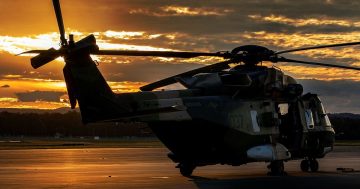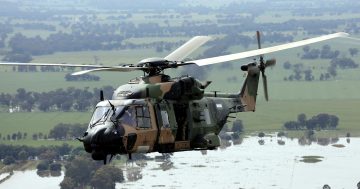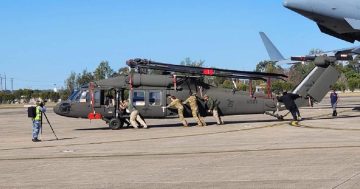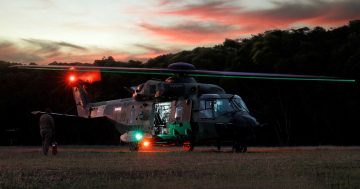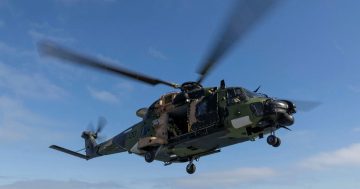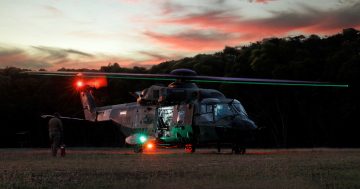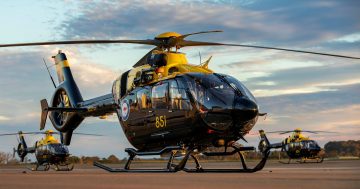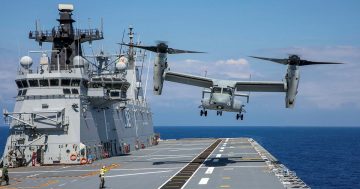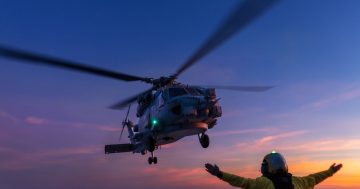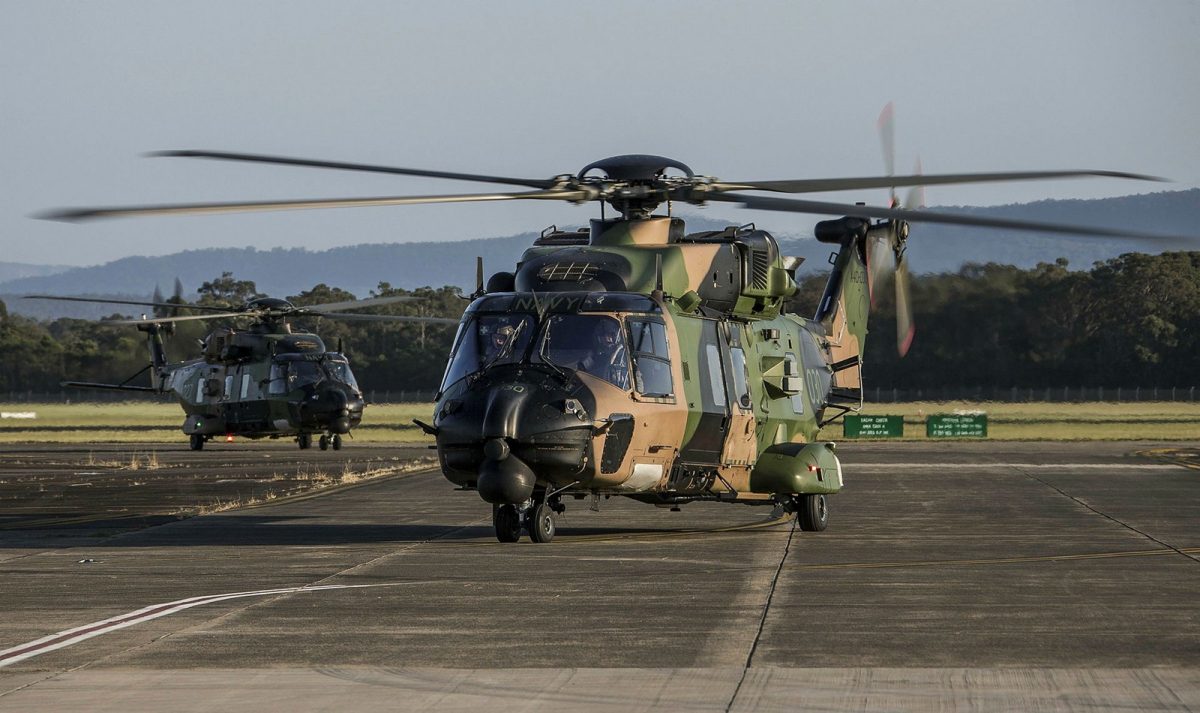
All of the ADF’s 45 remaining Taipans were grounded and subsequently withdrawn from service in August 2023. Photo: ADF.
A report into the ditching of an MRH 90 Taipan helicopter in Jervis Bay last year has shown the helicopter ended up in the water primarily due to procedural shortfalls by the crew.
On 23 March 2023, the helicopter with the callsign ‘Bushman 82’ was undertaking special forces training with a mix of 10 Army and Navy aircrew and divers aboard when it came down in the bay not far from the Navy’s training facility at HMAS Creswell.
Witnesses ashore reported hearing a loud bang before the helicopter hit the water right side up, and because the aircraft was fitted with an automatic emergency float system that kept it afloat and upright, all those aboard and in the water survived with minor injuries.
Despite reportedly being completed in late 2023, Defence Minister Richard Marles said the report has not been released due to concerns within Army that it may prejudice legal proceedings into a subsequent fatal crash of a Taipan in the Whitsunday Islands region in July last year that resulted in the deaths of its four crewmen.
“Defence has advised me that there is a significant risk that release of the full report and associated documents at this time may influence the willingness of personnel to participate in other investigations, which may impede ongoing investigations into the incident off Lindeman Island on 28 July 2023 by Defence, the Inspector-General of the Australian Defence Force, and other authorities,” Mr Marles wrote in a covering letter.
“Defence further advises me that, were this to occur, it would represent a significant legal risk to the Commonwealth.”
As a result of these concerns, only a redacted version of the report’s Executive Summary has been released.
A brief summary of the report says the ditching occurred after the failure of a high-pressure turbine blade in one of the aircraft’s two RTM-322 turboshaft engines.
Following the engine failure, the helicopter lost altitude and lightly impacted the water before returning to the air and settling into a stable hover. During the impact with the water, four of the divers who were partly hanging out of the aircraft’s cabin fell or jumped into the water.
“Bushman 82’s aircrew did not recognise the aircraft briefly impacted with water while executing initial bold-face emergency procedures,” the report reads.
“With the Automatic Flight Control System ‘Hover Mode’ still engaged and the right-hand engine at maximum power, the aircraft then rose into a low hover of approximately 23 feet, albeit with rotor speed decaying.”
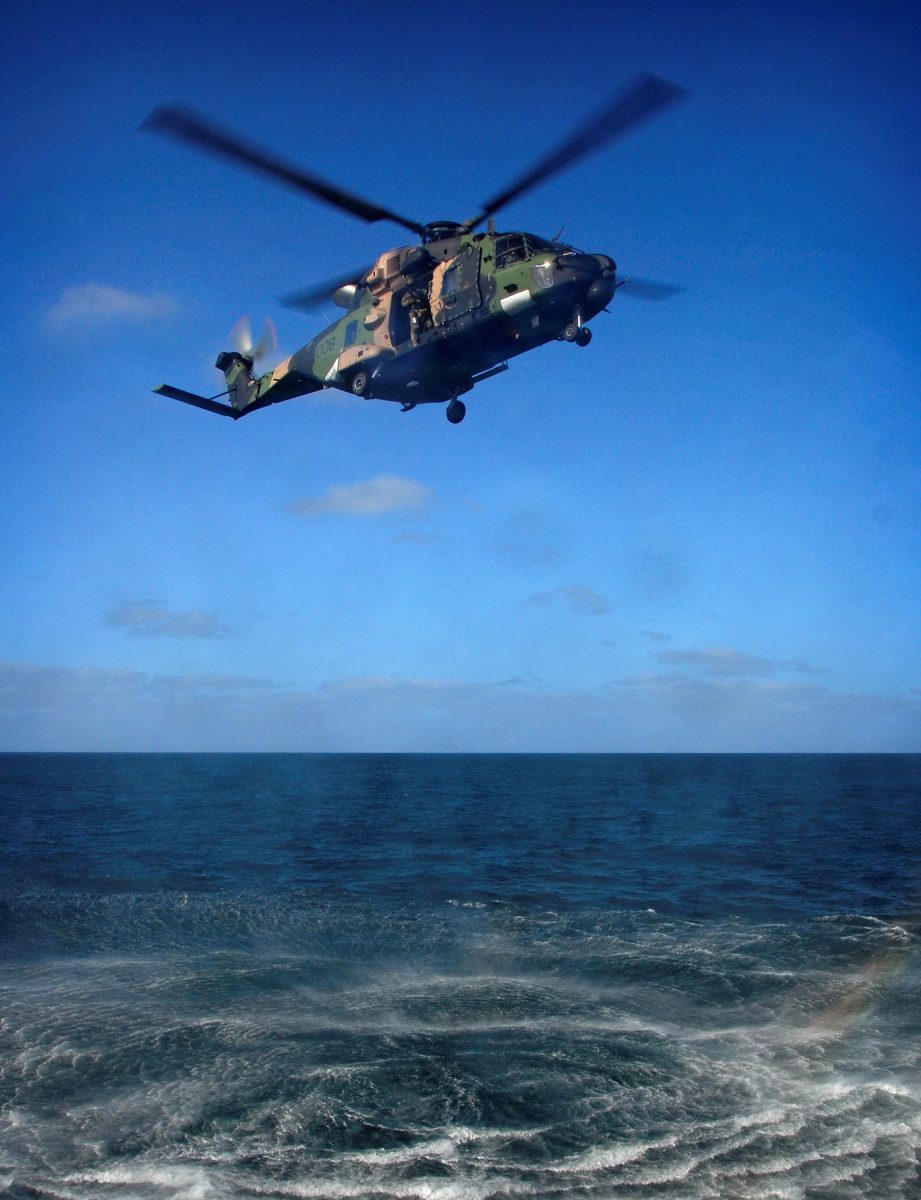
The aircraft was conducting special forces training with divers in Jervis Bay when it suffered a failure of one of its two engines. Photo: ADF.
It says the crew did not recognise that the aircraft was still flying.
“The Non-Flying Pilot in the left-hand cockpit seat, believing the aircraft had settled on the water, removed their helmet in preparation for commencing emergency egress procedures,” it says.
“The Flying Pilot in the right-hand cockpit seat, now aware the aircraft was, in fact, in a low hover, shut down the [still operating] right-hand engine at a height of approximately 19 feet. This resulted in a high rate of descent, an impact force of 8G, extensive structural damage to the airframe, and automatic activation of the EFS (Emergency Floatation System).
“The crew egressed successfully with minor injuries and were retrieved by prepositioned emergency rescue vessels.”
Even in redacted form, the report is a damning one. It shows that what should have been a recoverable incident instead resulted in the complete loss of the aircraft. It suggests that emergency procedures were incorrectly followed or not followed at all and that several of the crew members were lucky to come away from the ditching unscathed.
“The Non-Flying Pilot’s decision to remove their helmet contributed to the lack of effective crew coordination and communication to complete emergency checklist procedures to ditch the aircraft and prepare for the crew’s egress,” it says.
“In particular, selection and operation of switches by the pilots for critical systems such as aircraft engines, requires the pilots to communicate to identify the selection and confirmation of the correct operating system.
“Therefore, when the Non-Flying Pilot removed their helmet, they were less likely to be able to prevent the Flying Pilot’s inadvertent or inappropriate selection of the right-hand engine STOP-IDLE-FLIGHT switch to STOP.
“The Flying Pilot’s decision to shut down the right-hand engine was not in accordance with standard emergency procedures. This decision was found to be heavily influenced by their concern over potential injuries to the crew and personnel in the vicinity caused by flying debris from high-energy rotors striking the water.”
It’s now history that, even before this and the later crash, the government had decided to withdraw the Taipan from ADF service a decade early in favour of the Sikorsky Black Hawk, eight of which have now been delivered. However, following the second crash, the fleet of 45 Taipans was immediately grounded and never returned to service.












